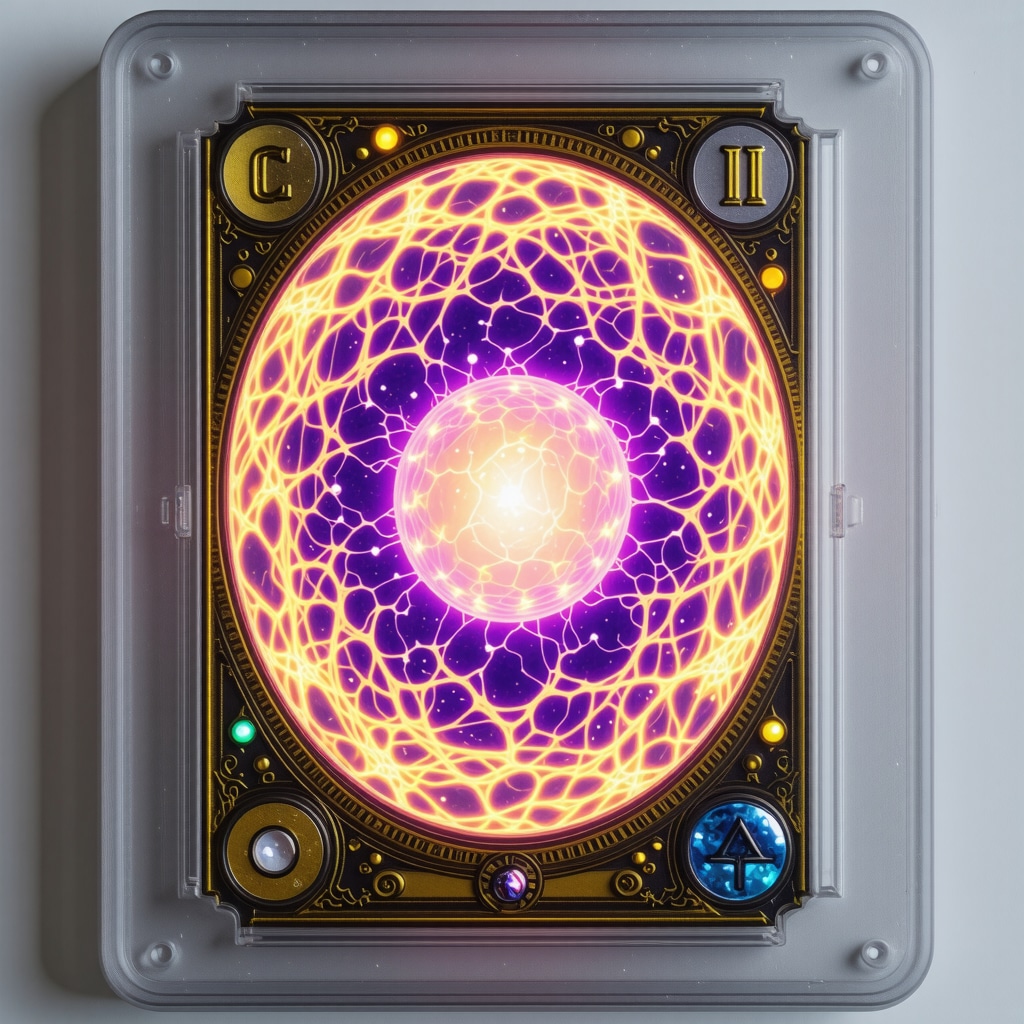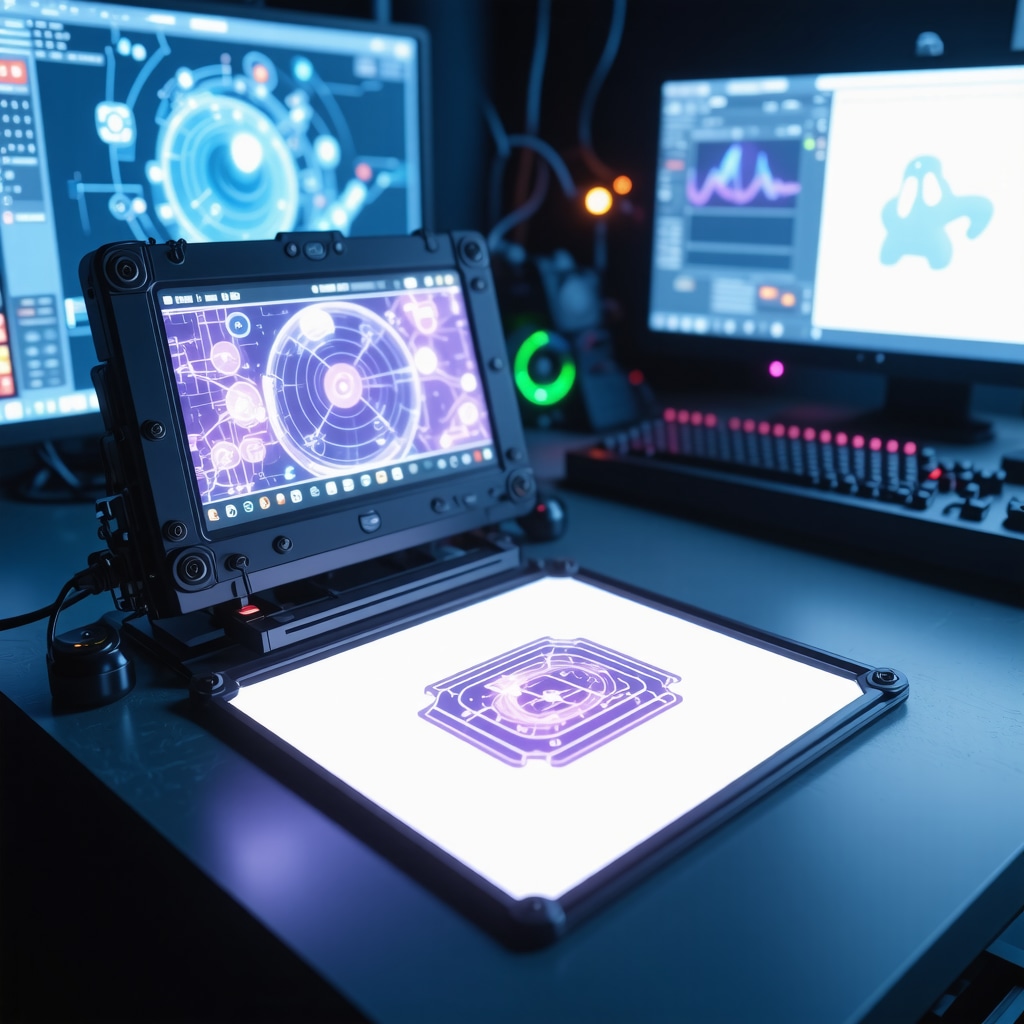Unlocking the Mystery: Why Authenticity Matters for CGC Gem Mint 10 Japanese Trainer Cards
In the world of Pokémon card collecting, especially with Japanese Trainer cards graded CGC Gem Mint 10, authenticity is paramount. These cards not only carry immense sentimental value but also significant market worth. However, the surge in counterfeit or misrepresented cards has made discerning genuine Gem Mint 10 Trainer cards a nuanced challenge. This guide offers expert insights into identifying authentic CGC Gem Mint 10 Japanese Trainer cards, ensuring your collection stands on solid ground.
Decoding the CGC Grading Label: Your First Line of Defense
The CGC grading label is more than just a sticker; it is a certificate of a card’s condition and authenticity. Authentic Gem Mint 10 labels feature a distinct holographic CGC logo, precise font spacing, and consistent color tones that counterfeiters often fail to replicate accurately. Pay close attention to the card’s serial number on the label and verify it through CGC’s official verification portal. A mismatch or absence of verification is a red flag. Learn more about quick identification techniques here.
Visual Inspection Techniques: Spotting Subtle Inconsistencies
Expert collectors use a magnifying glass to examine surface gloss, edge sharpness, and centering of the card. Authentic CGC Gem Mint 10 Japanese Trainer cards exhibit flawless edges, perfect centering, and a pristine surface free from scratches or print defects. The Japanese text should be crisp, with no blurring or ink smudges. Counterfeit cards often have off-center printing or subtle color discrepancies, especially in the intricate artwork details.
What Are the Most Common Signs That Indicate a Fake CGC Gem Mint 10 Japanese Trainer Card?
Common telltale signs include inconsistent holographic effects on the card and label, incorrect font styles on the grading label, and plastic slab imperfections such as bubbles or uneven thickness. Additionally, some counterfeiters reuse authentic slabs by inserting counterfeit cards—always check for tampering signs like loose slabs or glue residue. Comparing the suspected card side-by-side with a verified authentic card can reveal differences invisible to the untrained eye.
Leveraging Advanced Tools: UV Light and Microscopic Analysis
Using UV light can reveal hidden security features embedded in genuine CGC slabs and the card’s surface. Authentic cards may exhibit specific fluorescence patterns under UV that counterfeits cannot mimic. Microscopic analysis can detect print layering and card stock quality, which are often inferior in fakes. These advanced methods are invaluable for high-stakes collectors and investors aiming to secure their assets with certainty.
Expert Resources and Further Reading
For a comprehensive understanding of CGC grading standards and the nuances of Japanese Pokémon cards, this detailed guide is an authoritative resource. It provides in-depth explanations that elevate your expertise beyond surface-level knowledge.
If you have encountered suspicious cards or want to share your authentication experiences, please reach out to the community or leave a comment below. Sharing insights strengthens the collector network and safeguards the hobby.
Deep Dive into Slab Authentication: Ensuring the Integrity of Your CGC Holder
Beyond the card itself, the CGC slab plays a critical role in authentication. Authentic slabs are manufactured with specific polycarbonate materials that resist tampering and cracking. Scrutinize the slab for any signs of resealing or damage, such as uneven edges or warped corners, which may indicate a compromised encapsulation. The label inside the slab should be perfectly aligned and free from bubbles or wrinkles, as imperfections here often signal counterfeit attempts.
Comparative Market Analysis: How Fluctuations Affect Authentication Scrutiny
Market trends can influence the prevalence of counterfeit CGC Gem Mint 10 Japanese Trainer cards. During periods of price surges for iconic cards, counterfeiters intensify their efforts, requiring collectors to heighten their vigilance. Staying informed through reliable market analysis platforms, such as PSA Market Report Week 42, 2023, helps anticipate these waves and prepares collectors to apply enhanced authentication protocols.
How Can Collectors Utilize Technology to Stay Ahead of Sophisticated Counterfeits?
Embracing technology is no longer optional for serious collectors. High-resolution photography, combined with AI-driven image recognition tools, can detect micro-variations in print quality and color fidelity that elude the naked eye. Applications designed for Pokémon card authentication analyze thousands of authentic card images to flag deviations instantly. Integrating these digital tools with traditional methods, such as UV light inspection and slab examination, creates a robust multi-layered defense against counterfeit threats.
Community and Expert Networks: Collaborating for Authentication Excellence
Joining specialized forums and collector groups dedicated to Japanese Pokémon cards graded CGC Gem Mint 10 can provide invaluable peer insights. Experienced collectors often share detailed reports of emerging counterfeit techniques and verification successes, fostering collective knowledge advancement. Platforms like the Pristine Pokémon Cards Community offer direct access to authentication experts and real-time advice, enhancing the confidence of collectors in their acquisitions.
Integrating Authentication Insights into Your Investment Strategy
Understanding the intricacies of CGC Gem Mint 10 Japanese Trainer card authentication directly impacts investment decisions. Authenticity verification reduces risks and informs accurate valuation, crucial for portfolio diversification. Leveraging insights from trusted sources and combining them with market trends ensures your collection retains or appreciates in value. For strategic guidance, explore investment-focused analyses on CGC 10 Japanese vintage holo cards, which align authentication rigor with market savvy.
Decoding Microprint and Ink Composition: The Hidden Layers of Authenticity
One of the most overlooked yet crucial facets of authenticating CGC Gem Mint 10 Japanese Trainer cards lies in analyzing the microprint and ink composition. Authentic cards employ specialized inks with unique chemical properties that interact with light differently compared to counterfeit replicas. Utilizing spectroscopic analysis—often reserved for high-end authentication labs—can reveal these minute differences. For instance, genuine cards may use metallic or pearlescent inks that reflect UV light distinctively, a trait absent in most forgeries. This method complements visual inspection and UV light tests, providing a multi-dimensional verification approach.
Blockchain and Digital Provenance: The Future of Pokémon Card Authentication
Increasingly, collectors and grading companies are exploring blockchain technology to enhance provenance tracking for high-value collectibles. Embedding digital certificates linked to immutable blockchain ledgers ensures that once a CGC Gem Mint 10 Japanese Trainer card is graded and authenticated, its history is permanently recorded and accessible. This innovation drastically reduces the risk of label swapping or slab tampering post-certification. Early adopters in the collectibles market have seen increased buyer confidence and market transparency, setting a precedent that may soon become industry standard.
What Role Does Blockchain Play in Preventing CGC Slab Tampering and Label Fraud?
Blockchain’s decentralized ledger creates an unalterable record of each card’s unique grading information, including slab serial numbers, grading date, and photos. When a card is sold or transferred, this record follows it, allowing prospective buyers to verify authenticity with absolute certainty. This technology acts as a digital seal of authenticity that complements physical examination, effectively nullifying many traditional fraud tactics such as label reprinting or slab swapping. For a deep dive into blockchain applications in collectibles, see the authoritative analysis by CoinDesk’s blockchain authentication guide.
Implementing Machine Learning Algorithms: Automating High-Precision Authentication
Emerging machine learning models trained on vast datasets of authenticated Pokémon cards are revolutionizing how collectors and professionals approach authentication. These algorithms analyze parameters such as pixel-level color variations, font geometry, and holographic pattern consistency with unprecedented accuracy. By integrating these tools into mobile apps or desktop software, users can perform initial authentication scans rapidly, flagging items that require expert review. While not a standalone solution, machine learning provides a scalable method to screen large volumes of cards, particularly useful for investors managing extensive portfolios.
Collaborative Authentication Platforms: Harnessing Collective Expertise
Given the sophistication of counterfeiters, no single method guarantees absolute certainty. Therefore, collaborative platforms that aggregate expert opinions with technological assessments are gaining traction. These platforms facilitate real-time sharing of high-resolution images, forensic reports, and authentication certificates among verified experts. This collective intelligence approach not only democratizes access to top-tier authentication but also builds a dynamic database of counterfeit patterns and emerging threats, keeping the community ahead of fraudsters.

Practical Tips for Integrating Advanced Authentication into Your Collector Workflow
To maximize protection, collectors should adopt a tiered authentication strategy: start with thorough visual and slab inspections, proceed to UV light and microscopic scrutiny, then incorporate digital tools such as AI-driven apps and blockchain verification when possible. Maintaining detailed records of provenance and certification enhances traceability. Furthermore, engaging with authentication communities and attending expert-led workshops sharpens your evaluative skills and keeps you informed on evolving counterfeit methodologies.
Are you ready to elevate your Pokémon card authentication expertise? Dive deeper into our advanced guides and join our expert forums where seasoned collectors and authentication professionals converge. Your collection deserves the highest standard of protection — explore expert resources now.
Elevating Authentication with Spectral Imaging and Chemical Analysis
Beyond standard visual and UV inspections, spectral imaging technologies offer unparalleled insight into the ink and substrate composition of CGC Gem Mint 10 Japanese Trainer cards. Hyperspectral scanners can detect wavelength-specific reflectance patterns unique to genuine inks and card stock, identifying forgeries that mimic surface appearances but fail at a molecular level. Incorporating chemical analysis methodologies like Raman spectroscopy further refines authentication by revealing the precise chemical fingerprint of inks and coatings, which counterfeiters rarely replicate accurately. These advanced scientific techniques underscore a paradigm shift from subjective visual inspection to data-driven verification in high-value card authentication.
Decentralized Authentication Networks: The Next Frontier in Provenance Security
Building on blockchain’s immutable record-keeping, decentralized authentication networks propose a federated model where multiple independent experts validate card authenticity collaboratively. This approach mitigates risks associated with centralized grading bodies and introduces transparency through consensus mechanisms. By harnessing cryptographic proofs and timestamped validations, these networks can dynamically update provenance records as cards change hands, enhancing trust among global collectors and investors. Such systems integrate seamlessly with digital wallets and NFT platforms, paving the way for hybrid physical-digital collectible management.
How Can Integrating AI and Blockchain Synergize to Detect and Prevent CGC Slab Fraud?
Integrating AI-driven image analysis with blockchain provenance creates a robust, multi-layered defense against slab tampering and label fraud. AI algorithms continuously monitor uploaded card images for subtle inconsistencies—such as microprint anomalies or holographic pattern deviations—that might escape manual scrutiny. Upon verification, these findings are cryptographically anchored to blockchain ledgers, ensuring that authentication data remains tamper-proof and universally accessible. This synergy not only accelerates fraud detection but also instills confidence in secondary markets where provenance and condition critically affect valuation. For an in-depth exploration, refer to IEEE’s paper on AI and Blockchain in Collectibles Authentication.
Harnessing Peer-Reviewed Databases and Forensic Authentication Labs
For collectors seeking the highest assurance, submitting suspected cards to forensic authentication laboratories provides definitive verdicts. These labs employ peer-reviewed protocols combining microscopy, spectral analysis, and chemical assays, often referencing comprehensive databases of authenticated card metrics. Collaborations between grading companies and forensic institutions are gradually standardizing such methodologies, elevating authentication to a scientific discipline. Access to these services, although premium, is invaluable for ultra-rare or high-value CGC Gem Mint 10 Japanese Trainer cards where investment stakes justify rigorous validation.

Integrating Advanced Authentication into Portfolio Risk Management
Institutional and private investors increasingly recognize that authentication rigor directly impacts portfolio risk profiles. Incorporating advanced verification data into valuation models supports precise risk-adjusted return calculations, facilitating informed acquisition, disposition, and insurance decisions. Maintaining a dynamic authentication ledger with multi-source validations aids in audit compliance and dispute resolution, particularly in secondary markets. This holistic approach to authentication aligns with modern asset management principles, treating collectible cards not merely as memorabilia but as financial instruments requiring robust due diligence.
Engage with the Forefront of Authentication Innovation
Our comprehensive exploration reveals that mastering CGC Gem Mint 10 Japanese Trainer card authentication demands a fusion of traditional expertise and cutting-edge technology. To further refine your skills and safeguard your investments, we invite you to join our expert network and access exclusive resources tailored to advanced collectors and investors. Unlock specialized tools and connect with thought leaders today—because in the evolving landscape of Pokémon card collecting, knowledge and innovation are your greatest allies.
Frequently Asked Questions (FAQ)
What distinguishes a CGC Gem Mint 10 Japanese Trainer card from lower grades?
A CGC Gem Mint 10 represents a card in virtually flawless condition, exhibiting perfect centering, sharp edges, pristine surface gloss, and no visible imperfections under magnification. This top grade signifies peak collectible quality and commands a premium in the market.
How can I verify the authenticity of the CGC grading label?
Check for the holographic CGC logo, consistent font style and spacing, and precise color tones on the label. Always cross-reference the serial number on CGC’s official verification portal. Any inconsistencies or absence of verification suggest possible fraud.
Are UV light inspections necessary for every card authentication?
While not mandatory for all cases, UV light inspection reveals hidden fluorescence patterns unique to genuine cards and slabs, which counterfeiters struggle to replicate. This method is especially valuable for high-value cards or when initial visual checks raise suspicion.
Can technology fully replace expert visual inspection in authentication?
Technology like AI image recognition and spectral analysis augments authentication but does not wholly replace expert judgment. Combining traditional visual inspection with digital tools offers a comprehensive, multi-layered verification approach.
What are the risks of slab tampering and how can I detect it?
Slab tampering includes resealing or inserting counterfeit cards into authentic CGC holders. Look for uneven edges, glue residue, warped corners, or label misalignments. Detecting tampering requires careful physical examination and cross-verification with blockchain or serial data when available.
How is blockchain technology enhancing Pokémon card authentication?
Blockchain provides an immutable, transparent ledger that securely records grading details, slab serial numbers, and provenance. It prevents label swapping and slab fraud by enabling verifiable, tamper-proof history tracking accessible to buyers and sellers.
What advanced scientific methods are used in high-end authentication?
Techniques like hyperspectral imaging, Raman spectroscopy, and chemical ink analysis reveal molecular and chemical fingerprints unique to authentic cards, providing definitive evidence beyond surface-level inspection.
Is it worthwhile to submit cards to forensic authentication labs?
For ultra-rare or high-value CGC Gem Mint 10 Japanese Trainer cards, forensic labs offer peer-reviewed, scientific authentication with the highest certainty, justifying the premium cost for serious collectors and investors.
How can I stay updated on emerging counterfeit trends?
Engage actively in specialized collector forums, expert networks, and authentication communities. Following authoritative market reports and expert resources helps anticipate and recognize new counterfeit techniques.
What is the best strategy for integrating authentication into my collecting workflow?
Adopt a tiered approach: begin with visual and slab inspection, proceed to UV and microscopic analysis, and incorporate digital tools like AI apps and blockchain verification. Keep detailed provenance records and consult expert communities regularly.
Trusted External Sources
Certified Guaranty Company (CGC) Official Resources: As the grading authority, CGC provides detailed grading standards, label verification portals, and updates on slab security features essential for authenticating Gem Mint 10 Japanese Trainer cards.
PSA Market Reports and Research: PSA’s comprehensive market data and counterfeit alerts offer insights into market trends influencing authentication vigilance, especially during price surges for rare cards.
IEEE Xplore Digital Library: Contains peer-reviewed papers like those on AI and blockchain integration in collectibles authentication, offering a scientific foundation for emerging verification technologies.
CoinDesk Blockchain Authentication Guide: Explains blockchain applications in provenance tracking for collectibles, detailing how decentralized ledgers enhance security against slab tampering and label fraud.
Forensic Authentication Laboratories: Labs specializing in spectral imaging and chemical analysis provide empirical, peer-reviewed authentication, essential for high-value or disputed cards.
Conclusion
Authenticating CGC Gem Mint 10 Japanese Trainer cards demands a sophisticated blend of traditional expertise and innovative technology. From scrutinizing the CGC grading label and card microprint to deploying UV light, spectral analysis, AI-driven tools, and blockchain verification, each layer fortifies confidence in a card’s genuineness. By embracing this multi-faceted approach, collectors and investors not only safeguard their prized assets but also contribute to a more transparent and trustworthy market. We encourage you to apply these insights, engage with expert communities, and continue exploring advanced authentication methods to elevate your collecting experience. Share your discoveries, ask questions, and delve deeper into the fascinating world of Pokémon card authentication—your collection’s integrity depends on it.
